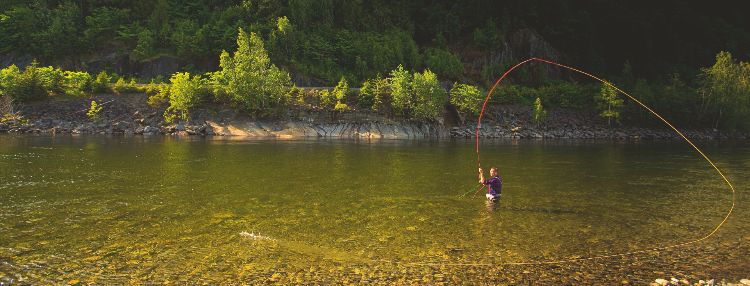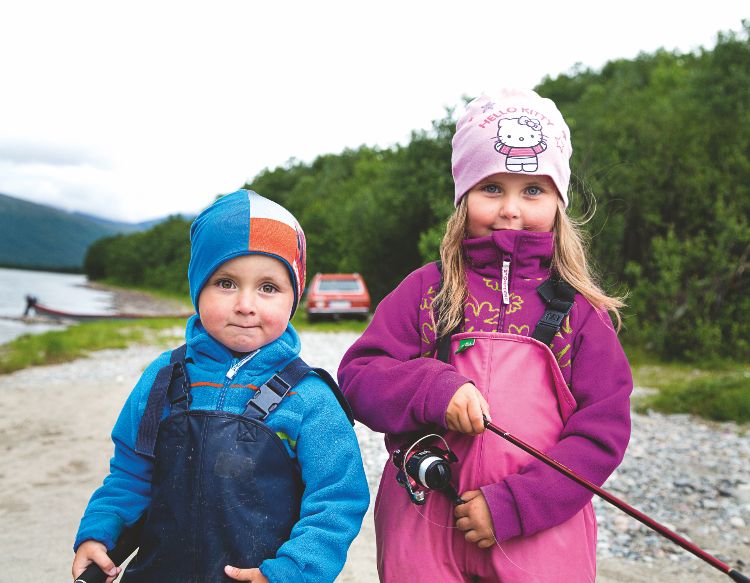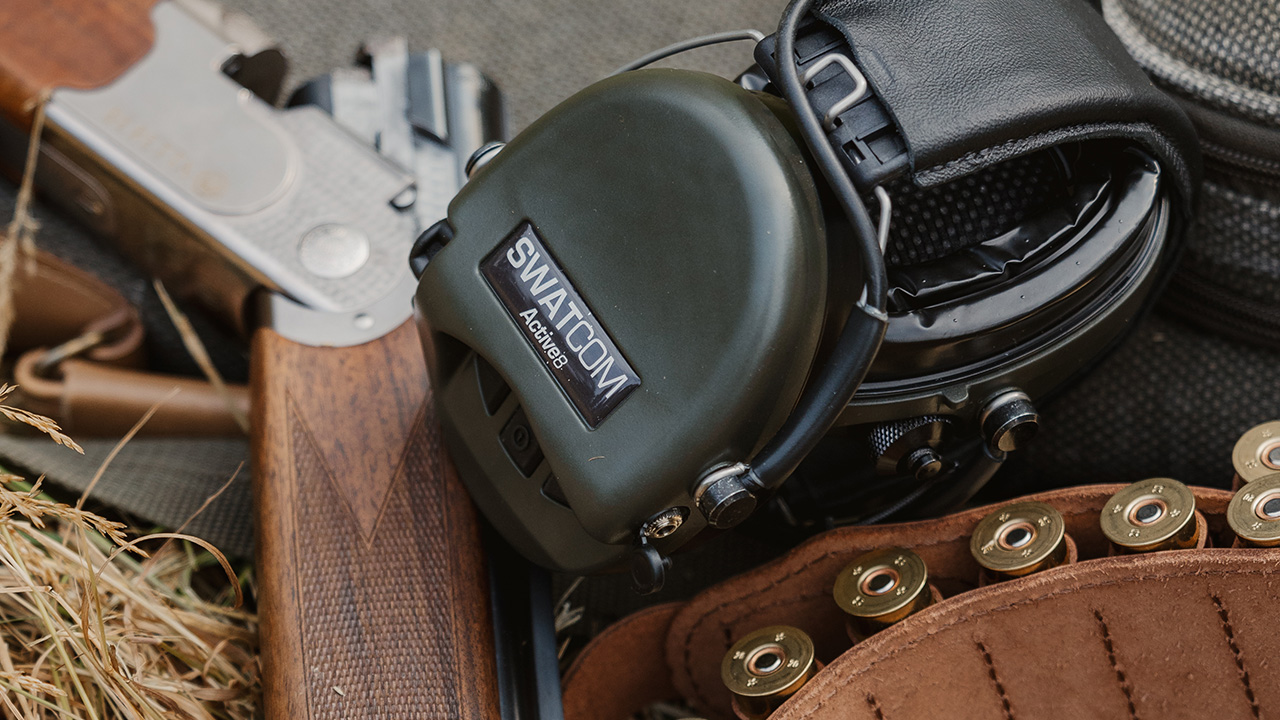The selfish generation
Be in no doubt: Atlantic salmon fishing is fast arriving at its Rubicon

Our generation has been lucky. Notwithstanding the relative hardship many have experienced since the economic ‘crash’ of 2008, we in the developed world are undoubtedly the wealthiest generation in history, and ostensibly, Atlantic salmon anglers have been particularly fortunate. With more disposable income than ever before, an almost limitless supply of information via the internet and a revolution in cheap air travel, we have been able to chase Atlantic salmon from Northern Labrador’s Ungava Bay to the Ponoi on the Eastern shores of Russia’s Kola Peninsula.
I’ve been fortunate enough to fish some of the world’s very best Atlantic salmon rivers, and I’ve caught some beautiful fish, but almost everywhere I go I hear grumblings that the fishing isn’t what it was.
There are exceptions: the rivers of Russia’s remote Kola Peninsula continue to provide spectacular numbers of fish of all sizes, and Iceland seems to be relatively robust despite the wild fluctuations in climate year on year. However, many fisheries, notably in the UK, Canada, Ireland and Norway, seem to have been in consistent decline for many years.
Most keen salmon anglers are conversant with the range of issues that are blamed for this decline: salmon farming and the resultant proliferation of sea lice that have had a savage impact on the wild smolt population; netting at sea and in river mouths and estuaries; and intense farming methods, which have degraded water quality through pollution and abstraction. There are other reasons, many of which we may only half-understand, but the factors listed all have a major impact, and all have one thing in common – they are man-made problems, and all could be prevented, if we so choose.

Unfortunately, most anglers are unable to afford the big price-tag associated with this exceptional fishing, and for many, salmon fishing means binary numbers – one or none – for their long week of hard graft. Many seem blissfully happy with this state of affairs, and bravely defend their attitude with the hackneyed old cliché that a fish is just a bonus.
I for one cannot share their stoicism. Anyone who knows me will tell you that I am more than prepared to put in the long hours, and I fish myself to a standstill every year on my cherished weeks on the Gaula, the Reisa or the mighty Yokanga. When the fishing is tough, no matter. If I arrive a week too early or a sudden flood hits the river – well, too bad. I’m happy to persevere.
However, I’ve all but given up on fishing in Scotland. Looking at a river in perfect ply, well into the season, but bafflingly devoid of fish has become the norm, and it’s nothing short of heart-breaking.
Why do we settle for it? After all, there are plenty of us. And anyone who can afford to fly fish for salmon has – by definition – a reasonable amount of cash in their pocket. We should be a pretty powerful lobby, both in my native UK and more crucially, on the international stage.
But we seem unable to wield any power. We seem destined to watch with impotent rage as our treasured salmon are being systematically wiped out by farms, abstraction and nets.
The little giant, Orri Vigfüsson, our one great statesman and inspiration, has left us, and dark clouds are crowding the horizon.
Our problems are legion. Salmon farming has crippled many of our rivers. Open-sea cage farming promotes a massive proliferation of sea lice, and the terrible damage that these sea lice are wreaking on wild smolts is killing our salmon streams.
This travesty is being allowed to continue despite the fact that farmed salmon produced in these open-sea cages – particularly in Norway and Scotland – are considered by many scientists to be potentially harmful to the consumer. According to some studies, very harmful indeed.
Numerous scientific studies have shown that, currently, farmed salmon are dangerous to eat in any great quantity, containing what some consider hazardous levels of dioxins, polychlorinated biphenyls (PCBs) and polybrominated diphenyl ethers (PBDEs).
Our incumbent political leaders have singularly failed to address these issues. In Scotland, Nicola Sturgeon seems utterly disinterested in the wild salmon’s welfare – and the huge potential revenue and employment that an associated thriving sport fishery can offer. She seems instead to be blindly supportive of Scotland’s salmon farming industry, despite the huge damage that it is doing to the marine ecosystem, and the increasing evidence suggesting that the industry’s produce is potentially unhealthy and even possibly carcinogenic.
Meanwhile, in Norway, although she has now left office, Lisbeth-Berg Hansen, the infamous ‘Lice Queen’, has been allowed to wreak havoc during her tenure as Norway’s Minister of Fisheries and Coastal Affairs. Her remit was surely to protect the wild salmon stocks of her country. In this duty, she spectacularly failed, and it is not hard to see the reasons why. Astonishingly, Lisbeth-Berg Hansen – the woman who Norway placed in charge of looking after the wild salmon’s interests – was also allowed to own a huge 8 per cent stake in Sinkaberg Hansen, one of the major players in the Norwegian salmon farming industry. This spectacular conflict of interest would be almost comical if it had not been so wretchedly damaging to the prospects for Norway’s wild salmon population.
If you add in a relentless culture of illegal – and astonishingly even some still legal – netting of these precious fish, and the fast-degrading habitats in both fresh and saltwater environments, the future for wild salmon seems profoundly bleak.
Belatedly, things are changing. Having expended 1.4billion Euros last year alone, Norsk, the body representing the majority of Norwegian salmon farm owners, have finally accepted that the cost of battling burgeoning lice infestation has become too expensive to sustain, and they have suspended any further open-sea cage development. Instead, they are starting to consider adopting closed containment farming. This decision is, in my opinion, not motivated by altruistic ecological concerns, but by a purely profit-driven agenda. However, it could potentially eradicate the sea lice issue, with huge beneficial implications for wild fisheries.
We need to see this happen quickly, and not only in Norway, but all aquaculture locations throughout the North Atlantic seaboard.
Closed containment would not only mean an end to sea lice infestation, but also the proper regulation of salmon farming in terms of its degradation of the local environment via its waste products.
This is in everybody’s interest, and it is an issue that we need to shine a very bright light on. A movement to closed containment tanks should allow for a full overhaul of the whole industry. It will allow the farmers to control the farmed salmon’s environment, and revise exactly how they produce their product, hopefully providing a much healthier product for the consumer, too.
That said, we must not relax – we need to fight relentlessly until closed containment is a reality, and we also need to see an end to all netting – legal and illegal – of wild salmon.
So what can we do? Well, the first thing we have to do is to embrace 100 per cent catch and release. Before you fly into a rage, hear me out, because this is a debate we simply have to engage with…
As anglers, we need to discuss the issue urgently; we need to do it in an atmosphere of calm and considered debate, as friends and fellow anglers, and we need to do so without becoming embroiled in an ugly and damaging battle of poisonous insults and rancorous infighting.
Believe me, I love to eat wild salmon. But the critical element in the debate is sustainability. While many grew up fishing ‘for the pot’ and feel that taking a fish home is an integral part of the salmon fishing experience, we have to accept that to do so is simply no longer sustainable. There are many more anglers – and far fewer fish – than ever before, and if every angler takes just one fish a season home, most rivers simply can no longer sustain the resultant impact on their stocks.
Even more crucially, we simply cannot dictate to others – netsmen, aquaculturists, farmers, catch-and-kill spin-fishermen et al – when we are impacting on the salmon stocks ourselves.
Many cling to the argument that catch and release is cruel, but this defence for catch and kill is a tired and divisive one. We all fish for the enjoyment of it, and if we didn’t, those that wanted to eat their catch would just pop down to the local fishmongers. Catching a fish to kill it is no more kind to the fish than releasing it.
We don’t live in a bubble. Most sport fishermen, in the UK at least, are coarse anglers and they are overwhelmingly 100 per cent catch and release anglers. They have long-since recognised that killing their catch is unsustainable. If game anglers can adopt this same attitude, we can be perceived as a powerful and unified band of conservationists who are invested in the long-term future of our quarry, and we can overwhelm the anti-fishing brigade by sheer weight of numbers. A cohesive lobby of all anglers would be a truly formidable political force and would be very hard for any political party to disregard. Then, perhaps, we might start to establish the political leverage required to start tackling the numerous factions ranged against us.
Anyone who feels that we can’t make this leap need only look to British Columbia, where the steelhead anglers are absolutely united in a total catch and release policy. A sea-run rainbow trout is no doubt delicious to eat, but I will never taste one. The fish are treated with the reverence that a precious and fragile commodity surely merits, and as a result, the quality of the fishing has – on the whole – flourished in recent years. Anglers employ only single, barbless hooks, all fish are handled with care, and are returned to spawn and sustain the species.
As a result, the steelhead lobby is united and aggressive – it takes the fight to the would-be polluters, the netsmen et al. The British Columbian steelhead fishery has plenty of issues, for sure, and there isn’t room to discuss them all here. However, even on rivers like the Bulkley, where the fishing is inexpensive and very easily accessed, I have enjoyed golden afternoons of three, four or five good fish on the bank, often on surface-skated dry flies, and often despite being surrounded by other anglers. I caught 38 beautiful steelhead in a fortnight in British Columbia last year. There are few Atlantic salmon rivers that can boast numbers like that.

Put bluntly, for all but a privileged few, Atlantic salmon fishing is fast becoming boring. Newcomers need to catch something – or at least see others do so and thus believe that there is a chance of a fish. If they don’t, they will drift away very fast, our numbers will dwindle and our power as a significant lobby that is capable of defending the salmon will diminish very quickly.
I have recently been embroiled in arguments with a number of anglers illegally killing fish on a river very dear to my heart, the Reisa in Northern Norway.
Reisadalen is a stunningly beautiful valley, and its river produces huge salmon every year: seven over 40lb, and 40 of over 30lb in weight were reported in the 2017 season and many more will have been caught and not declared. Believe me, if this river was properly looked after and allowed to flourish, it would be a salmon angler’s paradise. However, the river still suffers from a high degree of netting – much but not all of it illegal. Of the seven handsome fish I caught last year, four had severe net marks – and I’ve heard reliable reports of just one netsman alone catching 600kg of these precious fish in 24 hours. Yet how can we complain, if we as anglers are routinely taking fish ourselves?
Despite explicit rules forbidding the killing of any salmon weighing more than 5kg, many anglers on Reisa are killing magnificent trophy fish, often weighing 35lb and more, and thus removing them from the gene pool before they can spawn.
According to a number of local anglers I’ve spoken to, many are not even eaten, but are left to rot in bulging chest-freezers and are routinely thrown away come the following spring. What a tragedy.
Many Norwegian anglers I’ve crossed swords with on this issue argue that it is ‘traditional’ to kill the fish. I should respect their ‘traditions’, they tell me. Well, tradition be damned. We in England used to burn witches at the stake, not to mention shamefully subjugating other countries and cultures less supposedly ‘advanced’ than our own with our bibles and our red coats and our muskets. But we don’t do it any more. We live in more enlightened times, don’t we?
Tradition is often employed as a lazy excuse for adhering to dated and unsustainable modes of behaviour that are no longer defensible, and we have to discard this flippant justification for the killing of Atlantic salmon… before they are all gone.
This year, I once again fished at Reisastua Lodge on the Reisa with my good friend Scott Mackenzie and his son Ross. Many know Scottie as a world champion caster, and the first time I saw him cast a line clean across the wide waters of Canada’s Miramichi, I was genuinely astonished. Those close to him will also know that Scottie is not just a remarkable caster – he is also an extremely talented salmon fisherman.
Scott has caught three magnificent fish from the Reisa – fish of 31, 33 and 38lb. However, last year, Ross was catching big fish too. I came in one night after catching a nice fish myself to see Rossie grinning from ear to ear. He’d just released a beauty of 25lb, and his pride was utterly disarming.
Over the last few years, I’ve watched Ross grow from a boy into a bright, confident young man, who seems to have inherited his father’s warm, likeable nature, not to mention a twinkle of that same mischievous humour. I couldn’t have been happier for him.
Ross is the future. He deserves the chance – as do his grandchildren – to catch the big salmon of the Reisa, not to mention his home river, the Ness, and all the other great salmon rivers of the world.
We have to give him that chance, if we are not to be labelled for all time as the generation that let the Atlantic salmon go the way of the dodo – the selfish generation.
Related Articles
Get the latest news delivered direct to your door
Subscribe to Fieldsports Journal
Elevate your experience in the field with a subscription to Fieldsports Journal, the premium publication for passionate country sports enthusiasts. This bi-monthly journal delivers unparalleled coverage of game shooting, fishing and big game across the UK and beyond.
Each issue offers a stunning collection of in-depth features, expert opinions and world-class photography, all presented in a timeless yet contemporary design.
Save 10% on shop price when you subscribe, with a choice of packages that work for you. Choose from Print & Digital or Digital only with each journal delivered directly to your door or via the app every other month, plus access to past issues with the digital back issue library.







